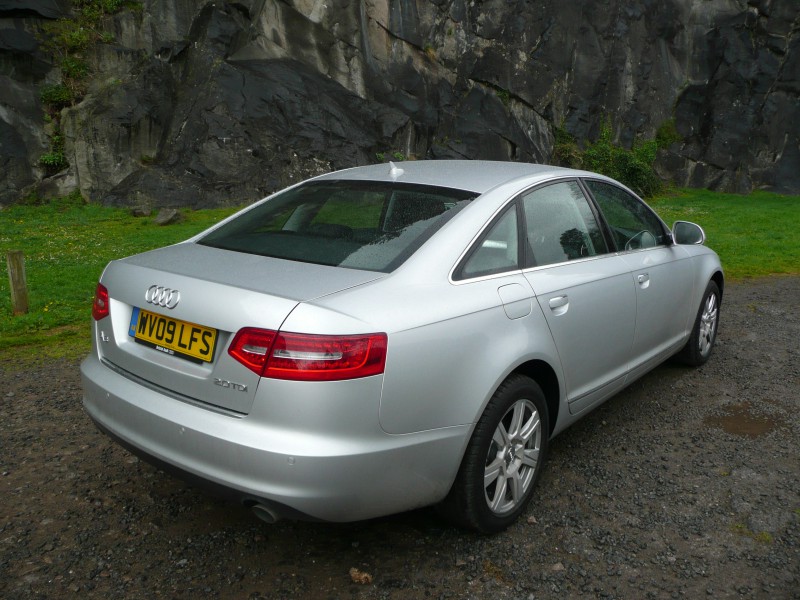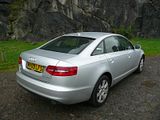

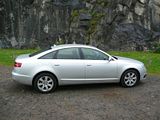
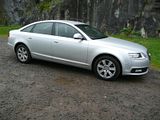
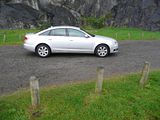
Almost exactly 12 months ago, I had my first experience of the Audi A6 TDi. Perhaps surprisingly, since the test was a few short weeks after I had fallen for the S6 model, I did not find the entry level 2.0 TDi to be the disappointment that you might have expected, and thought it had much to offer as comfortable cruiser. It was not all “good news”, though, and I did question whether the S-Line trim, and especially its rather harsh suspension was appropriate for a car which would likely be used to soak up the motorway miles. Since that test, two things have happened: I have had the joy of driving my own S6 for just over 10 months and 21,000 miles, and Audi have released a facelifted car. When the S6 went for its first service, instead of getting the default A4 TDi as a courtesy car, I was handed the keys to an 09 plated TDi model. An ideal opportunity, therefore, to reassess the 2.0 TDi and to see what effect the changes brought in for the 09 model year would have.
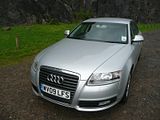

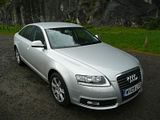
Although Audi claim to have changed a vast number of components, you would need to be very familiar with the car to spot more than a few of them. Most obvious, visually, are the new rear lights. These are now of the LED variety. Initially I did not like them, but as familiarity has increased, so my opinions have changed, and now I see them just as different, rather than “better” or “worse”. There are new door mirrors, too, with the currently fashionable trend of incorporating the indicator repeaters into the casing. The mirrors themselves are notably bigger, especially in their height. There was nothing wrong with the old ones, but anything that gives even better visibility has to be good, I guess. Inside, the changes are more subtle, and some of them come in the “why did they bother” category. I particularly noted the very slight reshaping of the controls in the centre of the dash on either side of the MMI display screen, which had been made slightly more hard edged. Quite why the costs of retooling these was seen as a priority is a total mystery. One of the switches is the button to open the glove box, let’s face it! The light switch, to the right of the instrument binnacle has changed, too, and now features a sliver of “metal” in it. I suspect this is because the same switch is used on other Audis (it is on the A4/5 and Q5 for instance), so here perhaps there is some logic. The MMI system has been upgraded, and is now in its third generation. A consequence of larger hard disk on which the data is stored means new and slightly clearer graphics resolution. But frankly, these are not the sort of alterations which will have any likely effect of whether someone buys an A6 or not.
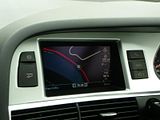
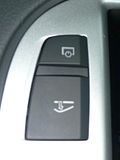

They might be more interested in how the car drives. Like my last A6 test car, this one was a TDi model, fitted with the optional Multitronic continuously variable automatic gearbox. However, this one had the latest 168bhp engine, thus 30 bhp more than the car I drove last time. It would take a back to back comparison to be able to assess the difference, as in the limited time I had the test car, and trying to recall my memory of the last one a year ago, it felt little different. This is a much more refined VAG TDi unit than the dreaded Pumpe Duese 1.9 unit which is still fitted to some of their vehicles, and it is better, even, than some of the earlier installations of this 2.0 engine. There is only a subdued diesel noise at start up, and the overall noise levels remain low. You are still aware that it is a diesel, but it is an acceptable sort of diesel. In my last test, I concluded that the combination of the Multitronic gearbox and this diesel engine worked well, and I stand by that assessment. Unlike some CVTs I have driven, the copious quantities of torque available and the fact that you are always, in theory at least, in the right gear, mean that the car is very smooth to drive. Whilst you would describe this as a fast car – and indeed it would not claim to be – it does make for rather a relaxed drive, as a seamless thrust forward is the result once momentum starts. The test mileage with this car was far shorter than last time, so I cannot comment on the economy levels, though the trip computer was suggesting that in the 4000 miles the car had covered since new, it had averaged 39 mpg. Clearly I have no knowledge of the sort of driving conditions that had contributed to that figure, though.
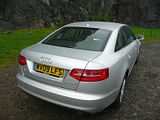
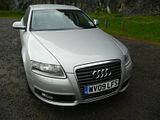
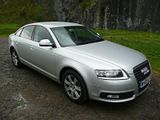
Somewhat unusually for Audi’s loan cars, the test car was not an S-Line, but in the SE trim. Having criticised the ride last time, I was interested to see what difference this would make, and am pleased to report that the car did feel more comfortable. Whereas there may be some trade off in extremis, given the sort of usage to which this car would likely be put, then I strongly suspect that SE trim makes more sense. Over the varied surfaces of the streets of Bristol, the car rode reasonably well, thanks to its long wheelbase, and standard 17″ wheels. No issues with the handling, though a mix of urban motoring and a short spell on a motorway is not exactly the place to find out about this. The steering is light, and although it rarely meets with the approval of the Press, I must have got used to Audi steering, as I had no issues with knowing what the road wheels were doing. No problems with the brakes, either. Like all A6 cars, there is an electronic handbrake, set by flicking up a small lever to the right of the gearlever. As this is an automatic, my usual reservations or annoyances with these devices do not apply.
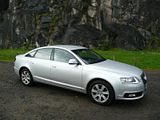
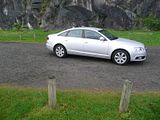
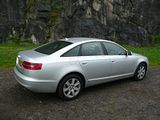
The cabin of the test car proved very familiar, with all the virtues that I am now well used to with my S6. For a start, it is huge. There is more than ample space in the rear seats, and the boot is so big that when I placed my umbrella in it, and it rolled all the way to the back of the rear seats, it was a less than dignified process for me to get it out. There are some differences from the S6, and these are in the details. SE trim brings the same brushed aluminium effect trim to the console, dash and doors that I selected as a no cost option on my own car, and does, I think, look better than the highly polished carbon fibre. Milano leather upholstery is standard, and whereas this is not as luxurious as the Silk Nappa in my own car (where it was not standard either!), it looked good, and covered very comfortable seats. Those seats have a manual adjustment for fore/aft and for the back rest, but that is no great hardship. The overall dash is very similar, of course, and is both a model of clarity and beautifully constructed. The test car had the optional Sat Nav system fitted, so the MMI system was effectively the same as the one in my own car, and with which I am now familiar (even if it did take me quite a while to figure out how to adjust the clock the other day!).
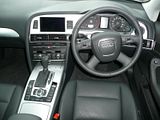
Given my conclusion on the earlier 2.0TDI model was favourable, it will not be a surprise to read that I liked this one, too. If I were in the market for an A6 at this end of the range, I think I would opt for the SE trim, and spend the money I saved from the S-Line spec (£2100) raiding (carefully) the Audi options list. And there’s plenty of things that are indeed on that options list. This is an Audi, after all! It might not be exciting, but for those looking for a roomy executive saloon that would cover the motorway miles effortlessly, the A6 TDi automatic has much to commend it.
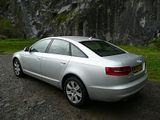
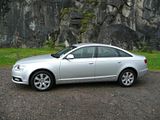
2009-10-14 06:39:41




















